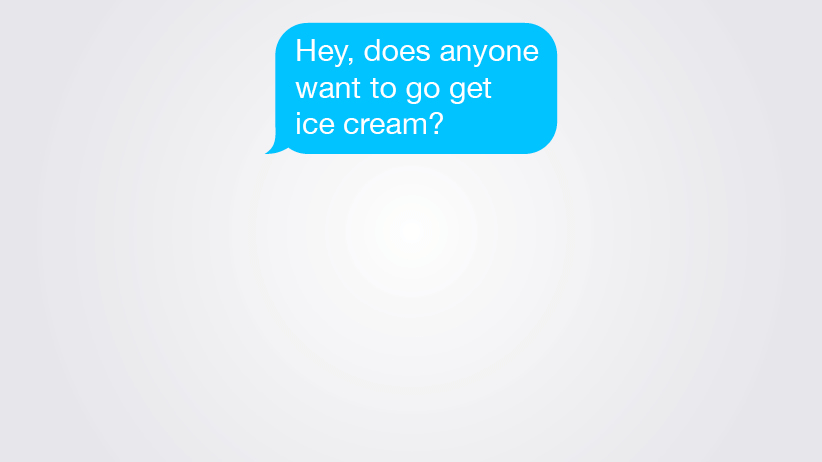How a Canadian helped create the new cricket emoji
It took research and determination to get a symbol for awkward silence to your keyboard
(Photo illustration by Stephen Gregory)
Share

When Susan Burtner encountered an awkward silence—when she texted her twin sister and was met with no reply—she needed to express her discomfort. But how?
The cricket emoji was conceived on Sept. 15, 2016 by Burtner, a 25-year-old research associate in Knoxville, Tennessee, and Yohei Rosen, a medical student from Vancouver. The pair sent the pitch to the Unicode Consortium, a not-for-profit organization that creates universal pictograms used by the ranks of Google, Apple and Netflix. By assigning a code to each icon, the consortium ensures a symbol sent using Google Android, for example, appears legible on iPhone or Skype.
On June 20, Unicode 10.0 was released with 56 new emoji, including the cricket, a curling stone and two kinds of dinosaur. Behind each one is months or years of proposals and petitions, supported by peer-reviewed research and near-religious devotion. Each one endured cautious vetting, for once they were born, emoji are immortal.
“The idea of awkward silence will always be present as long as humans exist,” Burtner wrote in her proposal. “The simple cricket is not associated with any logo, brand, deities or anything else” (the closest bug with divine connotation is perhaps the cicada, representing immortality to Ancient Greek mythologists). Burtner’s research ranged from crickets as omens of pregnancy in Brazilian culture, to the character Cri-Kee as the sidekick in Disney’s Mulan. Burtner argued, “many people around the world would benefit from a cricket emoji.”
Burtner knew she would get no money for creating the awkward emoji, but after her roommate invited her for ice cream one day and got a painful 10-minute silence, they decided she must volunteer her time for the cause. She called up Rosen, who had designed jerseys for her dragon boating team at the University of California, Berkeley. “I told him my crazy weird idea,” says Burtner, “and he was more than willing to help.” He stayed up late between medical school assignments, using Adobe InDesign to draft a cartoon bug.
The cricket candidate was vetted by the Unicode emoji subcommittee, which meets on Tuesdays by phone between 7:30 and 8:45pm Pacific Time. The subcommittee is open to members of the consortium, which range from Microsoft to students from around the world to the government of Bangladesh. When vetting a proposal, the group considers how often a new symbol has been requested, how often it might be used, whether it’s complimentary to existing emoji and many other factors. “We never remove any Unicode characters; that’s one reason they get a lot of scrutiny,” says Mark Davis, president of Unicode, via e-mail. “Once encoded, Unicode characters are around forever.”
Emoji politics peaked when Unicode came out with a revolver, and seemingly in reaction to violence in the United States, Apple changed the icon to a squirt gun. Each system can modify the design of the emoji, adjusting for skin colour or gender, and can add their own emoji, as Apple did to represent single-parent families.
The coming of the cricket risks less controversy, but Burtner did consider if the insect should appear male or female (Rosen’s design turned out looking unspecific). After passing the eyes of the subcommittee, the cricket prototype went to the Unicode Technical Committee, which met from January 23 to 26 at Apple’s headquarters in Sunnyvale, Ca., where cricket competed with proposals for chopsticks, an exploding head, and a “merperson” (a non-gendered mermaid). Burtner argued the cricket would be popular, noting that the number of Google searches for the insect in the past five years was 4500 per cent greater than the searches for a lady beetle. “Why does this not exist yet?” she wondered, as she recalls. But with no feedback from the committee, she and Rosen waited nine months in silence.
Burtner was sitting at her desk in Tennessee, around lunchtime, when she got the acceptance e-mail from Unicode. “The emoji subcommittee reviewed it on Tuesday and wanted me to relay that it is a nice proposal. They will be adding ‘cricket’ to a larger set of animals for consideration in the future, and cite this proposal as background information,” the email read.
Now long live the cricket, with the code U+1F977. The president of Unicode isn’t sure if emoji will ever go out of fashion. “That’s quite difficult to say,” writes Davis in an email. “I don’t have a ![]() .”
.”